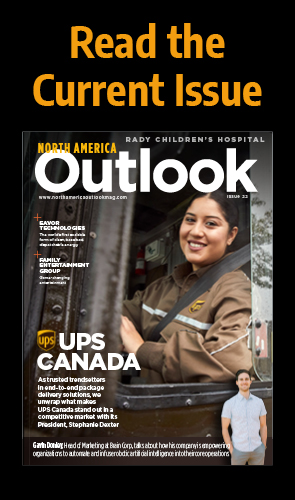More of us than ever – 2.1 billion globally, in fact – are turning to e-commerce in a bid to get our shopping fix. Sam Ranieri, CEO at Reach, examines the new age of shopping online.
INTRODUCTION
Prior to 2020, the number of consumers choosing to shop online was already increasing; now, accelerated by the COVID-19 pandemic and the knock-on effects of changing consumer behavior, this rise is breaking every record ever set for e-commerce growth.
The statistics for growth from 2020 prove that e-commerce needs to be an integral part of every brand’s strategy from the very beginning. Indeed, according to Digital Commerce 360, the past year saw the highest annual growth in US e-commerce for two decades (44 percent), as well as the biggest jump in e-commerce penetration in the US ever recorded (5.5 percent). In fact, 2020 became the first year in history that e-commerce sales accounted for the entirety of US retail growth (101 percent).
This new age of e-commerce brings with it vast opportunities, but it’s not 2010 anymore. Consumers are savvy, fraudsters are sharp, and the biggest players keep getting bigger. Retailers can take advantage of the unprecedented confluence of advances in technology, mass digitisation and of course, the pandemic. For those seeking to bridge the gap to success in e-commerce, my advice is simple: Focus entirely on the primacy of the customer’s experience while optimizing your own cross-border operations.
THE BEAUTY OF BEING BORDERLESS
Not being confined to one locale has a fundamental benefit: instant access to an international customer base that is far larger than any single domestic market. Customers are on the hunt for new, unique retail goods, and serving that buyer will get you brand loyalty, an expanding customer base, and increased revenue. However, to succeed on an international scale, you have to do it right. A few bad experiences, and you lose that customer forever.
Cross-border transactions have high decline rates. Shockingly, 18 percent of foreign e-commerce transactions are declined in the US, which goes to show how being unprepared for your international consumer can backfire spectacularly.
While customers are happy to make purchases across the globe from the safety of their sofas, they don’t like to be out of their comfort zone when it comes to an unfamiliar checkout experience.
If you are a borderless merchant and have noticed an unusually high rate of drop-off once customers head toward the pay button, consider your checkout process. If it’s an unfamiliar UX, if you have irrelevant payment methods displaying, or if you’re offering too many payment or shipping options, any of those missteps can put customers off. You’ll lose those sales.
It’s also important to remember that consumers will trust what they know. Many potential customers will be put off by unfamiliar currencies and languages, which can make them doubt the legitimacy of the business from which they’re buying. Be sure to consider accessibility for every market you’ll be operating in.
KNOW YOUR CUSTOMERS PERFERRED PAYMENT METHOD
Across the globe, different regions will have their own favoured payment methods. For example, 56 percent of e-commerce transactions in the Netherlands use iDEAL to conduct real-time bank transfers.
For many consumers, it’s a matter of security. Offering a payment method that they’ve never heard of, even if it’s in their regional currency, can make consumers wary about purchasing. Even if they do feel secure enough to pay, that may not be enough; if you’re operating in the Netherlands and aren’t supporting iDEAL, then you’re creating barriers to payment and friction for 56 percent of your potential customer base.
Ultimately, each market a merchant trades in has its own nuances and payment culture. The good news is that you don’t need to understand all these fluctuations and variations yourself, as a payment partner with expertise in local payment methods can enable merchants to target every customer, in any country, as an individual.
DON’T GET CAUGHT OUT BY EXCHANGE RATES
Arguably one of the bigger and continued sticking points for retailers dealing in cross-border e-commerce is finding their prices are less competitive than larger or local competitors due to having to add the cost of increased FX rates to the price of their products.
Their other option is to absorb the costs themselves and watch their profit margins suffer as a result. To resolve this, retailers need to work with local banks, or expert payment providers, to ensure they get the best FX rates available, allowing them to increase their price competitiveness and secure more sales.
Don’t worry – there are specialists who can do this for you. Solutions are now available to facilitate cross-border merchants with not only a solution to optimize and offer their customers the very best in FX rates, ensure they are regulation-compliant and provide the hyperlocal knowledge and expertise that will make international trading a pleasure and not a pressure.
BE REGULATION AWARE
Perhaps the most important piece of advice I have for every brand I work with is to continually investigate and make themselves aware of the various territory regulations.
Secure Customer Authentication (SCA), for example, is a European regulation that is part of the EU’s Payment Services Directive (PSD2). While a similar protocol has not yet made it into federal regulation in the US, regulations aren’t going anywhere, and merchants need to be aware of the impact they can have on their transactions. Indeed, efforts such as the California Consumer Privacy Act (CCPA), which seeks to harmonise US data privacy laws with the EU’s General Data Protection Regulations (GDPR), are an indicator that the North American region is perhaps on the fast-track to catch up.
LOCAL EXPERTISE EVERYWHERE
With so many payment methods and regional differences around the globe it’s important to study up on your hyperlocal knowledge – or to employ specialists that operate in those regions – so that your business is as competitive as possible.
That’s not to say that an independent merchant – big or small – needs to go out and hire a new team to support borderless efforts. The amount of resources required to succeed can be prohibitive for smaller merchants, so it pays to do your research. Partnering with experts in the payment arena can provide all of the benefits you would get by operating in-country, without the huge investment of both time and money it takes to set up business across borders.
With e-commerce, and particularly cross-border e-commerce, looking likely to continue its sterling growth across 2021 and beyond, brands need to plan for operating on a global scale from the very start. Regulatory awareness, an in-depth understanding of the consumer experience, and an appreciation for cultural and regional differences will be vital to staying successful in an ever-changing economic landscape.
































